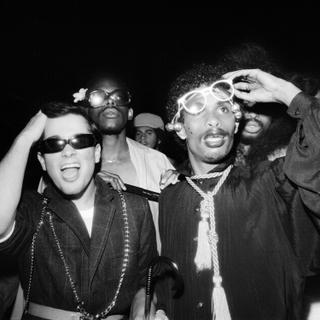


New York's Saturday night fever, photographed by Meryl Meisler
GalleryIn the late 1970s, Meryl Meisler discovered New York clubs where a new style of music was all the rage: disco. Joyful young people swayed to hits by Chic, Donna Summer and ABBA. These candid pictures of wild parties will be displayed in the Philharmonie de Paris' exhibition 'Disco - I'm Coming Out,' from February 14 to August 17.
"There were all kinds of people. People dressed as girl scouts, nuns, laborers, wore business suits – or even were completely naked." Almost 50 years have passed and Meryl Meisler still couldn't believe it. On February 14, 1977, Valentine's Day, the young woman had ended up in a New York nightclub. She was familiar with rock nights at CBGB, the famous lower Manhattan club. Yet a whole new world opened up before her: disco.
The music genre, born a few years earlier from a fusion of funk, soul and pop music, exploded and mixed the gay, Latino and Black communities together. It offered a show of unrestricted joie de vivre in an America that was emerging from a decade marked by the pathetic end of the Vietnam War and the Watergate scandal. The disco era left its mark on record sales charts, with Chic, ABBA, Diana Ross (one of whose songs lends its title to the exhibition) and, above all, the queen of the genre: Donna Summer. Now, it is the subject of the "Disco - I'm Coming Out" exhibition at the Philharmonie de Paris.
Meisler went back to the clubs with her camera many times over. She photographed couples getting together, dancers concentrating on their steps, and explosions of laughter. As a homosexual woman, she would frequent lesbian parties, but "liked nothing better than those where all communities mixed."
'I was not an intruder'
Out of respect for her models, she would always ask them for permission before photographing them. "There was something natural about it. I wasn't an intruder, a paparazzi, I was one of them." At the time, she had Brassaï's images of Paris in the 1920s and 1930s in mind, as the Hungarian-born Frenchman had a habit of declaring: "I became a photographer to capture Paris after dark."
You have 64.46% of this article left to read. The rest is for subscribers only.
